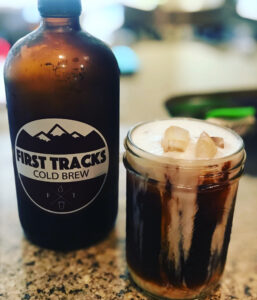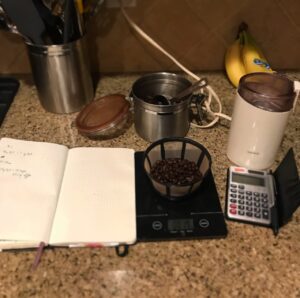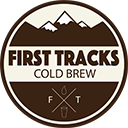
The State Of Cold Brew Coffee Today
Cold brew coffee is having a moment. People are drinking it and iced coffee by the gallon full. We know, we sell it by the keg. The crazy thing about it is that as many people as there are who drink coffee, there are that many ways to drink it. When we ran our coffee truck, Doppios, in the Denver area, I would tell my staff, coffee is weird. Not only do people have a very specific way they want their coffee but they want that specific drink from any cart, kiosk, truck or coffee house they visit. When you find that special way. Hold on to it because it’s yours and it was made special for you.
The problem is, as everyone knows, you can’t get that same cup of coffee
from every kiosk. There are too many different variables to affect the outcome. That’s why the consistency of chains is often so appealing, you eliminate all the variables so you get the same thing everytime. Looking over the cold brew/ice coffee posts on facebook, reddit and other social media it is easy to get overwhelmed by the amount of advice and conflicting recipes on how to make the best cold brew. We started with our recipe 6 years ago and have modified it slightly over the years when we’ve changed roasts or origins, however, for the most part we have done the same thing for 6 years, long before #coldbrew was a thing. We’ve taken our proprietary recipe and placed it in cold brew packs for a no mess solution, our cold brew packs. For those of you focused on

Cold brewing at home.
doing things the more complicated way (right on), please enjoy the following.
Factors that Affect Cold Brew Coffee
To get slightly scientific, the list of variables to make a good tasting cold brew is a lot longer than you might think. On the coffee side you have:
- Origin: Where the coffee comes from
- Roast: How light or dark it is roasted
- Grind: How coarse or fine the ground coffee is.
- Ratio: The amount of coffee to water
External variables can affect the final product as well, these include:
- Water profile: What minerals are dissolved in the water
- Temperature: The temperature of the water coffee will sit in for the next several hours.
- Time: How long the coffee is ground
- Agitation: Whether the coffee and water is mixed during the process
Here’s the thing. You can spend hours and I don’t know how much money in coffee trying figure out what the best way to make cold brew, we’re going to make it simple for you. I may be giving away the goods here what follows is a breakdown of how to make cold brew coffee. Addressed variable by variable in depth first, Cliff Notes at the end. Our no guess Cold Brew Packs
Origin/Roast: There are hundreds of different varieties each with their own flavor profile. In my personal opinion I prefer and medium to dark roast with notes of carmel, chocolate and red wine. I do not prefer the lighter, more citric beans simply because they become too fruity when cold brewed and I like to still know I’m drinking coffee and not tea. The bottom line for this particular variable is, brew what you normally drink. If you like it in your brewer, use it in your cold brew.
Grind: Grind typically describes how coarse or fine the coffee is ground. It can range between a fine powder to the coarseness of sea salt. The idea is, the more the coffee is ground, the finer the particles, the more surface area is exposed to the water and the more easily flavors, aromas and all the other good (and bad) stuff is extracted.
I am going to buck the trend for most of the cold brew industry. I prefer to use medium or fine grind for our cold brew. The common line of thinking, within the industry is the longer the coffee is in contact with the water, the more coarse the grind. Your espresso is going to brew in the 20 second period it takes to pull a shot. Your home coffee maker is going to take more time so the grind is more coarse and the French Press will steep for even longer so a more coarse grind is needed. But here’s the thing… those methods are using heat to help extract everything out of the coffee. Cold brewing is not, hence cold brewing. Because those little water molecules are moving around slower (8th grade science), you need a greater surface area to be exposed to extract enough.
With the finer grind comes some drawbacks. Home cold brewers will find that dealing with sediment is a bigger issue for example. To avoid this you’ll need to really focus on filtering. Commercial operations are equipped for this, however, it’s still a pain in the butt. Additionally, many feel like a finer grind will result in a more bitter taste. So I recommend starting with the same grind you would use for drip and go from there.
Ratio: Here is a big one. Because grind affects how much coffee is crammed into a given space most people typically base their cold brew coffee on a coffee:water ratio measured by mass or weight. What you first need to determine is whether you want to make a concentrate or ready to drink (RTD). I’ve seen ranges vary between 1:5 for to 1:16 depending on how strong you want it to be. The stronger ratio (1:5) would come out as a concentrate and need to be diluted down. For our finer grind, we would use the higher end 1:16 and produce a ready to drink product. This means for every 1 oz of coffee you would use you would combine anywhere between 16 oz of water (1 fl oz water = 1 oz of water weight). Of course how much coffee is extracted varies according to all fo these factors listed.
Water Profile: As much as I love debates over what city or region has the best pizza or BBQ, a much less exciting debate is over who has the best municipal water supply (congratulations Metropolitan Water District of Southern California) If you like the taste of your town’s water, go for it. For areas near the beach or anywhere else that has noticeable water I would use filtered. Do not use distilled, distilled water is void of any and all minerals so the taste is going to be off.
Steep Temperature: Cold brew vs iced coffee, there is a difference. Cold brew is steeped at room temp, iced coffee has been brewed hot then allowed to cool and served over ice. If you’ve made it this far you probably know that. When we say cold brew its somewhat of a misnomer. At least for us we brew our coffee at room temperature between 72-78 F. If we take a trip back to 5th grade science we remember that the higher the temperature the more the water molecules are going to be moving around. The more they move the more extraction takes place. The same way sugar dissolves in hot water more easily than cold.
The key is to steep at a temp that allows for the right flavor extraction over 18-24 hours. When we have tried to brew in the refrigerator, we have gotten an extraction rate of about 65% less than the coffee steeped at room temp. It had a weak, flat taste, no good, very bad, I don’t advise. At home, I prefer to steep on the counter in an air-tight container and then move to the fridge once done.
Time: This is one of the easiest variables to test out. The longer coffee is left to sit out, the longer there is for the flavors, aromas and caffeine to be pulled from the grounds. Common thought is cold brewed coffee should be left to sit for anywhere between 18-24 hours. I have seen as low as 8 hours but never more than 24. We’ve found that the 22 hour time frame is the sweet spot but 2 hours on either side of that is not going to make that big of a difference. Best way to judge if your cold brew is done is to try it out at every 4 hours until it tastes good.
Agitation: Once the grounds are placed in the water the tendency is to set it and forget it but a lot can be said for a little agitation. Mixing things up a bit just by shaking the bottle, jug or jar can expose grounds surrounded by other grounds to water and mix things up for more efficient steeping. Most of us stir pasta to make sure it doesn’t get clumped together, for the same reason we want to make sure our coffee is mixed occasionally.
Cliff Notes Version:
- Take 4 oz of coffee you enjoy, darker roast preferred.
- Grind it for drip or slightly more fine.
- Combine with 20 oz of water.
- Place on your counter for 18-24 hours stirring occasionally.
- Filter out the coffee.
- Allow to cool in the fridge and enjoy over ice.
Making Cold Brew Coffee with First Tracks Filter Packs:
After all of this is said, I would recommend trying our no mess Cold Brew Packs. Each bag contains 4 filter packs containing our dark or medium roast coffee roasted and ground specifically for cold brew. Simply place one of the bags in a container and fill to a total of 32 oz and place on the counter. After 18-24 hours, remove the bag and top off for a total of 32 oz and enjoy. No measuring, no mess. We’ve formulated and tested these extensively and view them as a great starting point for your perfect cup. Follow the instructions and adjust accordingly based on your personal taste. Add less water for a stronger brew, steep for less time for a lighter taste. It’s your call.
Did we get something wrong? Let us know in the comments or email us at info@firsttrackscoldbrew.com we’d love to hear what you think.
Cheers,
A




